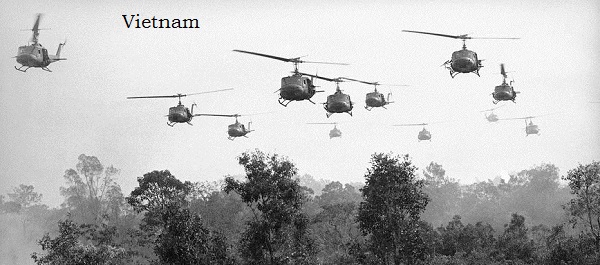


Cerro Gordo County Iowa
Part of the IAGenWeb Project
|
The Globe-Gazette
 The Globe Gazette will publish 50 stories — starting on Veterans Day — about North Iowa’s Vietnam Veterans. The stories will appear on Sundays and Wednesdays. We’ll culminate this "They Served With Honor" project with a special section (publishing on the day before Memorial Day) that will include all of the profiles. It will be great keepsake and resource for family members, educators and part-time historians.
by Molly Montag, January 20, 2016
"A class at Southwest Minnesota State required that we interview a business owner, so I went to interview the Army recruiter," Murra said. "When I arrived at the recruiting center the Army recruiter was out, but the Air Force recruiter was in. One month later I was in Air Force basic training." It would turn into 21-year career that took Murra to Vietnam as well as several areas around the U.S. In the 1970's, going into the military didn't strike Murra as unusual. It was just what people his age did. "It was so normal for guys at that time to get drafted and go into service I just accepted it as my fate," he said. After attending technical school, Murra was sent to Davis-Monthan Air Force Base in Tucson, Arizona, where he was a jet engine specialist.
Murra wasn't fazed by the possibility of being sent overseas. As he puts it, "I was 19 and didn't care." "I grabbed my toolbox and my duffel bag and away we went," he said. Murra ended up in Thailand, where the United States launched missions into Vietnam, Cambodia and Laos. He worked on planes at Royal Thai Air Force Base Udorn, in northern Thailand, and Korat, in central Thailand. Some planes had bullet holes. Others had frames stressed from too much downforce.  In Korat, Murra and his fellow airmen would watch for lights of returning B-52s from the balcony of old Thai Army barracks. After flying missions the bombers returned to Korat via U-Tapao Royal Thai Naval Airfield, a base south of Bangkok on the Gulf of Thailand. "Sometimes there wouldn't be as many as what left," Murra said. The relative secrecy was essential during the war fo Thailand could avoid invasion by claming neutrality, Murra said. "Forty thousand North Vietnamese regulars (were) just north of us," he said. "As long as Thailand remained neutral they wouldn't bother us." They didn't. He was deployed twice. First for 179 days and then back for a year. During his second stint he got a glimpse of semi-secret Air Force activity. Missions were supposed to be over, but there was clearly continued action in Cambodia and Laos, Murra said. "We would see airplanes loaded with bombs, but they would be back an hour later with no bombs on them," he said. "So, we knew something was going on. They weren't going very far." After his service was over, Murra stayed with the Air Force as a recruiter. "After I'd been in four years I kind of wanted to come home, but my dad and brother were farming. They didn't need another partner," he said. He recruited in St. Paul, Minnesota; San Antonio, Texas; and eventually in Spencer. He and his wife are now back in Buffalo Center. He retired in 1992 as a master sergeant.
Photograph courtesy of Globe-Gazette
|